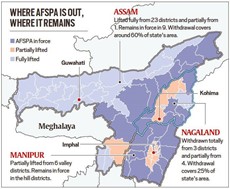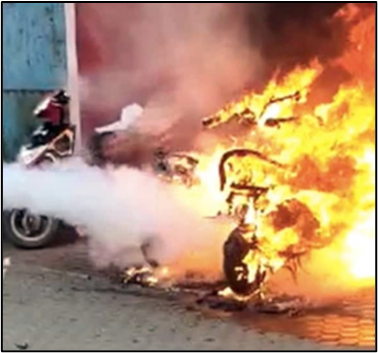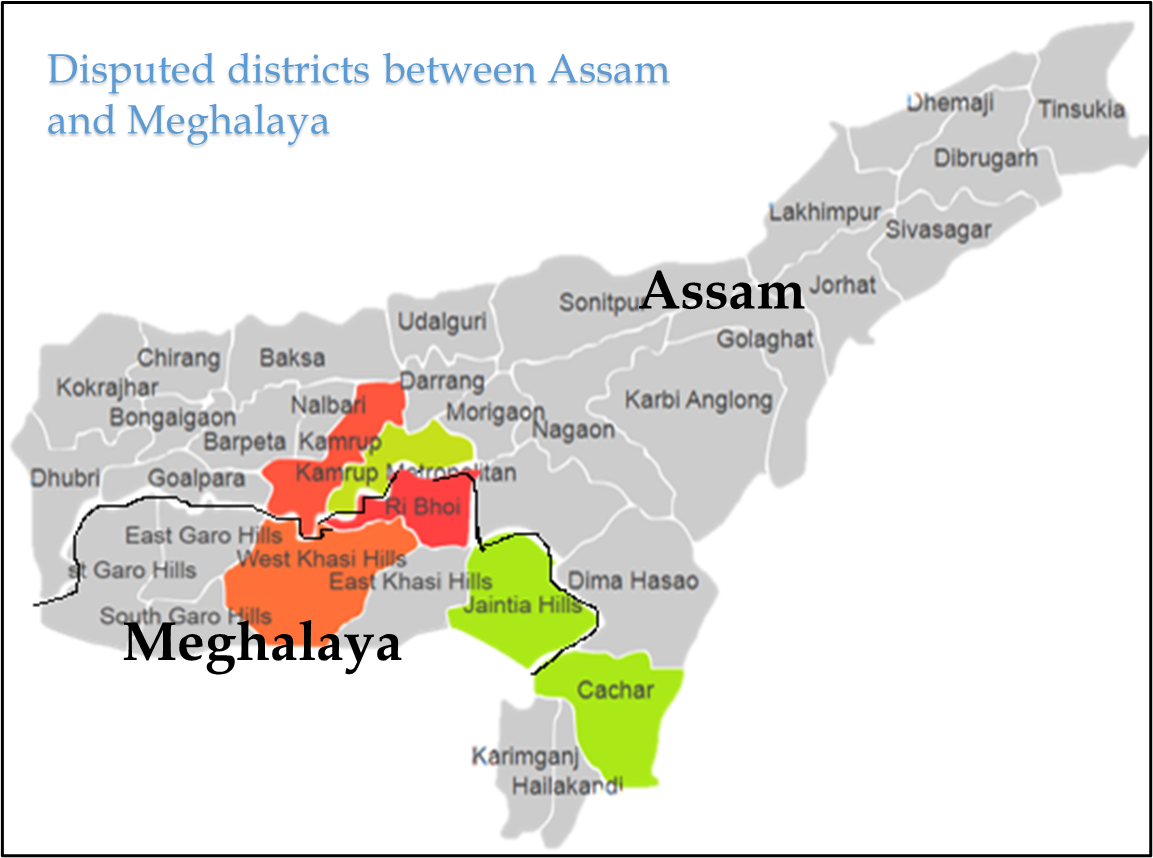Monday, 4th April 2022
Punjab’s Claim over Chandigarh
In News
The Union government has notified Central Service Rules for employees in the Union Territory of Chandigarh instead of the Punjab Service Rules while Punjab Assembly in a special session passed a unanimous resolution reiterating the state’s claim on Chandigarh.
The Status of Chandigarh
- After Partition, Shimla was made the temporary capital of Indian Punjab while a modern city was mooted to be built to replace the erstwhile capital city of Punjab, Lahore.
- In March 1948, the Punjab government, in consultation with the Centre, chose the current location at the foothills of the Shivaliks as the site of the new capital.
- The capital was officially moved from Shimla to Chandigarh on September 21, 1953.
- The Punjab Reorganisation Act of 1966 carved out the new state of Haryana from undivided Punjab, created the new Union Territory of Chandigarh under the direct control of the Centre, and transferred the hill territories of Punjab to Himachal Pradesh.
- Chandigarh, became the common capital of both Punjab and Haryana, and properties were divided between the states in the ratio 60:40.
- The 1966 Act did not make changes in the ‘The Capital of Punjab (Development and Regulation) Act, 1952’ that identified Chandigarh as the Capital of Punjab.

Development over the years:
- During the reorganisation of Punjab, it was said that Haryana would later on get a new capital while Chandigarh would be capital of Punjab.
- In 1970 a formal communiqué the Centre suggested various alternatives including dividing Chandigarh. But that was not practical since it is a planned city.
- Haryana was given five years and a grant of Rs 10 crore to come up with a new capital.
- In 1982, Akali Dal launched the Dharam Yudh Morcha along with Jarnail Singh Bhindrawale with the object of realising the goals of the Anandpur Sahib Resolution of 1973 that also raised the issue of the capital city.
- In 1985, the Rajiv-Longowal Accord was signed between then Prime Minister Rajiv Gandhi and Akali leader Harchand Singh Longowal.
- The accord included transfer of Chandigarh to Punjab and even the date of transfer was fixed on 26 January 1986. Before the event took place, militants assassinated Longowal.
- Since 1967, seven resolutions have been brought in the Punjab Assembly staking claim to Chandigarh.
What does the present resolution state?
- The resolution states that according to the Punjab Reorganisation Act, 1966, a 60:40 ratio is to be maintained in the Chandigarh administration between officers from Punjab and Haryana, but this is not being followed by the Centre.
- In administration, the balance was maintained for common assets including Bhakra Beas Management Board (BBMB) by providing management positions in some proportion to nominees of both the states.
- However, recently the centre is intervening in this maintained balance by advertising the BBMB posts to officers of all states and central government.
Haryana’s Stand:
- Haryana Government has stated that the Punjab government’s one-sided resolution is of no accord, Chandigarh is the capital of Punjab and Haryana and will remain so.
- In the past, Haryana Government suggested that a special body should be set up for the development of Chandigarh, which was rejected by Punjab.
- Haryana has been demanding a separate High Court, and has passed a resolution in the Assembly demanding 20 rooms in the Vidhan Sabha complex that have been in Punjab’s possession.
Sources:
‘Tap to Pay’: UPI
In News
Google Pay has recently unveiled ‘Tap to Pay’ for UPI payments, in collaboration with Pine Labs.
About the News
- ‘Tap to Pay’ feature was earlier available only for payments made through cards.
- To complete a payment now, a user would need to tap their phone on the point-of-sale (PoS) terminal and authenticate the payment from their phone, using their UPI PIN.
- This makes the process virtually instantaneous, as compared to scanning a QR code, or entering the UPI-linked mobile number.
- The functionality will be available to any UPI user who wants to use their Near Field Communication (NFC)-enabled android smartphone to transact using any Pine Labs Android PoS terminal across the country.
- “Tap to Pay” for UPI has profound implications for high traffic retail outlets, with queue management hassles assured to be greatly reduced, and taking digital payments at PoS well beyond cards.

Understanding Near Field Communication (NFC)
- What is it? NFC is a short-range wireless technology that allows two devices — like our phone and a payments terminal to talk to each other when they’re close together. In other words, NFC is the technology that enables contactless payments.
- With NFC, one can transfer information between devices quickly and easily with a single touch like paying bills, exchanging business cards, downloading coupons, or sharing a research paper.
- How does it work? NFC transmits data through electromagnetic radio fields to enable two devices to communicate with each other.
- To work, both devices must contain NFC chips, as transactions take place within a very short distance.
- NFC-enabled devices must be either physically touching or within a few centimeters of each other for data transfer to occur.
- Significance:
- Because the receiving device reads the data the instant we send it, NFCs greatly reduce the chance of human error.
- NFC mobile payments are dynamically encrypted, making them one of the most secure ways to pay.
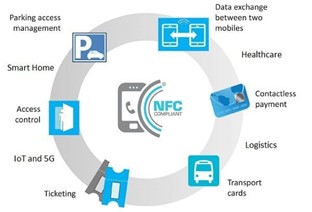
Source:
- Google Pay unveils ‘Tap to Pay’ for UPI payments
- NFC Guide: All You Need to Know About Near Field Communication
- Google Pay launches Tap to Pay for UPI, in collaboration with Pine Labs
Image source:
Death penalty
In News
Examining issues raised in a specific case, the Supreme Court has suo motu opened a review of the process by which courts award the death penalty.
About the News
- The Supreme Court has previously expressed concern over the manner in which trial courts and High Courts have carried out sentencing with limited information.
- The Supreme Court while upholding constitutional validity of death penalty in Bachan Singh’s case in 1980 has also outlined a set of frameworks to be followed by future judges while deciding between life sentence and death penalty.
- However, a study by Project 39A looking at 15 years of death penalty sentencing in trial courts has shown that the Bachan Singh framework has broken down, with judges attributing to it multiple and inconsistent meanings.
- The move by Supreme Court is seen as a judicial step to ensure that a comprehensive examination procedure is done in death penalty cases.
What are the major issues?
- Miscarriage of justice: There are instances when higher courts have commuted death sentences citing errors committed by courts below and
- Poor report filing: The Supreme court has often called for reports from probation officers, prison superintendents, and independent mental health experts in an attempt to correct the errors.
- Unfair and arbitrary: The court is undertaking an exercise to reform the procedures by which information necessary in a death penalty case is brought before courts.
- Lack of experts: The judgments in Santa Singh (1976) and Mohd Mannan (2019) have recognised the interdisciplinary nature of such an exercise requires professionals other than lawyers to collect such information.
- Emphasis on Crime-centred approach: According to 262nd report of Law Commission of India, the crime-centred approach to sentencing is often arbitrary and in violation of the mandate of the frameworks decided by the Supreme Court.
- Lack of meaningful information: Due to lack of proper mechanisms to ensure the actual collection of information, very sparse sentencing information about the accused is brought before the judges.
- Poor legal presentation: It is an empirical reality that the vast majority of death row prisoners are economically vulnerable and very often receive poor legal representation. As a result, they do not have access to professionals and experts with the necessary training and skill sets to undertake the complex exercise of collecting mitigation information.
- Unfair and Arbitrary: Supreme Court has acknowledged concerns with the manner in which death penalty sentencing is being carried out which often has triggered accusations of unfairness and arbitrariness on several occasions.
What are the major factors taken into consideration by courts?
- Impartial trial: A criminal trial has two stages — the guilt stage and the sentencing stage. Sentencing happens after the accused has been found guilty of the crime; this is the stage where punishment is determined. Therefore, anything presented or said during sentencing cannot be used to reverse or change the finding of guilt.
- Circumstances: It is a fundamental tenet of criminal law such that the judge takes into account individual circumstances of the accused. It speaks to a very intuitive sense of justice that all our decisions and actions result from a complex interplay of various factors concerning our lives, and the emphasis is that such interplay is different for each individual.
- Situation of convict: Justice would be an incomplete idea if criminal law was incapable of considering an individual in all their complexity and the various factors that contributed to a set of decisions and actions in their lives.
- Mitigation process: The idea of mitigation is to give practical application to considerations of culpability and deservedness that are crucial to the moral idea of punishment.
Sources:
International Day for Mine Awareness
International Day for Mine Awareness is observed annually on April 4 to increase attention among people regarding assistance for mine action work, raise awareness about landmines and the threats to the safety of humans and work towards their eradication. This year, the theme of International Mine Awareness Day stands for “Safe Ground, Safe Steps, Safe Home". Here, United Nations Mine Action will focus on the remarkable achievements of the global mine action community. “Safe Ground” is the name of the global campaign “turning minefields into playing fields,” which was launched by the Secretary-General of the United Nations in 2019, and the concept of clearing the Earth of landmines and other explosive hazards to make it safe for development. “Safe Steps” brings attention to the trepidation that too many people experience when they move about, not knowing if they will detonate an explosive that could maim or kill them at any moment. “Safe Home” is about restoring the personal security of individuals and communities in post-conflict settings. There is no place like home, and it is difficult to feel at home without security and community.

Sources:
India-Australia Economic Cooperation and Trade Agreement (ECTA)
In News
India and Australia signed an economic cooperation and trade agreement. Indian Prime Minister described it as a watershed moment for bilateral relations.
A brief Detail on ECTA Negotiations
- The India-Australia ECTA is the first trade agreement of India with a developed country after more than a decade.
- The Agreement encompasses cooperation across the entire gamut of bilateral economic and commercial relations.
- Eight subject specific side letters covering various aspects of bilateral economic cooperation were also concluded as part of the Agreement.
A brief Overview of India-Australia Relations
- This is a special partnership characterized by shared values of a pluralistic, parliamentary democracies, Commonwealth traditions, expanding economic engagement, long standing people-to-people ties and increasing high level interaction.
- The India-Australia Comprehensive Strategic Partnership initiated during the India-Australia Leaders’ Virtual Summit held on 04 June 2020 is the cornerstone of this bilateral relations.
- India and Australia have been each other’s important trading partners. Australia is the 17th largest trading partner of India and India is Australia’s 9th largest trading partner.
- India-Australia bilateral trade for both merchandise and services are valued at US$ 27.5 billion in 2021.
- India’s merchandise exports to Australia grew 135% during 2019-21. India’s exports consist primarily of a broad-based basket largely of finished products and were $ 6.9 billion in 2021.
- India’s merchandise imports from Australia were $ 15.1 billion in 2021, consisting largely of raw materials, minerals, and intermediate goods.
- India and Australia are partners in the trilateral Supply Chain Resilience Initiative (SCRI) arrangement along with Japan which seeks to enhance the resilience of supply chains in the Indo-Pacific Region.
- India and Australia are also members of the Quad, also comprising US, and Japan, to further enhance cooperation and develop partnership across several issues of common concerns.
- The India-Australia ECTA will further cement the already deep, close, and strategic relations between the two countries and will significantly enhance bilateral trade in goods and services, create new employment opportunities, raise living standards, and improve the general welfare of the peoples of the two countries.
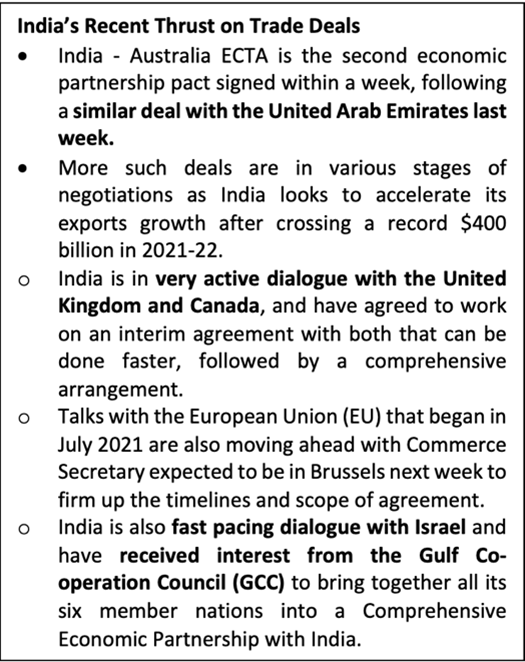
Salient details of ECTA
- Institutional Mechanism: ECTA provides for an institutional mechanism to encourage and improve trade between the two countries.
- Coverage: The ECTA between India and Australia covers almost all the tariff lines dealt in by India and Australia respectively. India will benefit from preferential market access provided by Australia on 100% of its tariff lines.
- This includes all the labour-intensive sectors of export interest to India such as Gems and Jewellery, Textiles, leather, footwear, furniture, food, and agricultural products, engineering products, medical devices, and Automobiles.
- In return, India will be offering preferential access to Australia on over 70% of its tariff lines, including lines of export interest to Australia which are primarily raw materials and intermediaries such as coal, mineral ores, and wines etc.
- Trade in Services: Australia has offered wide ranging commitments in around 135 sub sectors and Most Favoured Nation (MFN) in 120 sub sectors which cover key areas of India’s interest like IT, ITES, Business services, Health, Education, and Audio visual.
- Some of the key offers from Australia in the services space include: Quota for chefs and yoga teachers; Post study work visa of 2-4 years for Indian students on reciprocal basis; mutual recognition of Professional Services and Other licensed/regulated Occupations; and Work & Holiday visa arrangement for young professionals.
- India has offered market access to Australia in around 103 sub-sectors and Most Favoured Nation in 31 sub-sectors from the 11 broad service sectors such as ‘business services’, ‘communication services’, ‘construction and related engineering services’, and so on.
- Both sides have also agreed to a separate Annex on Pharmaceutical products under this agreement, which will enable fast track approval for patented, generic, and biosimilar medicines.
Significance of the ECTA
- Timing of the Pact: A closer engagement between the two Quad alliance partners comes even as Australia, along with Japan and the U.S., push India to take a stronger stand on Russia’s invasion of Ukraine.
- Revival from Pandemic: ECTA is expected to help India forge deeper ties with the raw-material rich Australia as it seeks to become a manufacturing hub to revive the pandemic-hit economy.
- China Factor: Australia is seeking to diversify export markets and reduce Australia's dependence on its biggest trading partner China as it grapples with China’s trade curbs on a range of commodities exports.
- This agreement will enable both the countries to increase the resilience of supply chains, and also contribute to the stability of the Indo-Pacific region.
- Thus, the deal is a significant milestone at a time when the developed world is looking to hedge its supply chain dependence (majorly on China).
- Enhance merchandise exports: A number of Indian exports currently face a tariff disadvantage of 4-5% in many labour-intensive sectors relative to competitors — those with FTAs with Australia — such as China, Thailand, Vietnam. Removing this barrier could enhance merchandise exports significantly.
- Enhanced competitiveness of raw material-oriented sectors: Australian exports are more concentrated in raw materials and intermediates. Hence Indian industries like steel, aluminium and fabric/ garments will get cheaper raw materials which will make them competitive.
- Safeguarding sensitive sectors: To safeguard sensitive sectors, India has several goods in the exclusion category in which no duty concessions will be accorded to Australian imports.
- Such goods will include milk and other dairy products, toys, sunflowers, seed oil, walnuts, pistachio nuts, platinum, wheat, rice, bajra, apple, sugar, oil cake, gold, silver, chickpeas, jewellery, iron ore and most medical devices.
- There is, however, a provision that both countries will cooperate to promote agricultural trade as part of the agreement and will work toward concluding an enhanced agricultural Memorandum of Understanding (MoU).
- Safeguard mechanism: The agreement provides for stricter rules of origin to prevent any routing of products from a third country; safeguard mechanism to deal with any unusual surge in imports; and similar norms for the steel sector.
- For the pharma segment, the pact would provide fast-track approvals and fast-track quality assessment/inspections of manufacturing facilities.
- In the services sector, benefits for India include post study work visa of 2-4 years for Indian students on reciprocal basis; and work and holiday visa arrangement for young professionals.
- Post study work visas will provide extended options for working in Australia to eligible Indian graduates, postgraduates, and STEM (science, technology, engineering, and mathematics) specialists. Currently, there are more than 1 lakh Indian students enrolled in various courses in Australia.
Concluding Remarks:
- The India–Australia strategic partnership has grown quite rapidly over the last few years. This is impressive considering how indifferent New Delhi and Canberra were towards each other a decade ago.
- The change in the tone and direction of the relationship over the past decade is driven by shared concerns about China’s rise and its strategic implications for the Asia Pacific order. But it also reflects a changing view of India from “down under” in Australia. The message is getting through that modern India is now an economic power, and fast becoming a regional security power.
- The economic case is clear - India is by far the fastest growing major economy in the world – with GDP projected to grow at 9% in 2021-22 and 2022-23 and 7.1% in 2023-24.
- Overall, the agreement will help in taking bilateral trade from $27 billion to $45-50 billion in the next five years. India expects one million jobs will be created in the next five years.
- After the Australian FTA with China, few predicted the massive growth to $235 billion, leapfrogging China into clear leader among Australia’s trading partners. The same rate of growth could happen to India if business and government grasp the opportunities of this new deal. Moreover, the Australian government previously set a goal to lift India into its top three export markets by 2035 – this should urgently be revised and brought forward to 2030 or even earlier.
Question: The significance of recently concluded India - Australia ECTA not only stems from its provisions but also linked to the current geopolitical scenario. Examine.
Sources:
- Signing of the Economic Cooperation and Trade Agreement (ECTA) between India and Australia
- India, Australia Sign Trade Deal In Boost To Bilateral Ties
- India-Australia Trade Turbo Charge Could Achieve $75 Billion in Five Years
- India-Australia deal seeks to double bilateral trade in 5 years
- 10 years in making, India and Australia seal landmark free-trade deal
- India, Australia sign FTA, trade likely to ‘double in 5 yrs, generate 1 mn jobs’
- India Australia Deal: Employment, Student and Job Visas, Other Benefits India Gets
- India-Australia FTA in goods, services to double trade to $50 billion in five years
- India-Australia Economic Cooperation and Trade Agreement
- India, Australia sign trade deal to open 'biggest economic door':
Painting of Battle of Pollilur
This is image of a painting depicting the Battle of Pollilur. It is one of the numerous significant paintings commissioned by Tipu Sultan. The nearly 32-foot long monumental painting represents the victory of the Mysore army led by Haidar Ali, the ruler of Mysore, and his son Tipu, against the British troops of the East India Company in the Battle of Pollilur, which took place in September 1780. The work was commissioned by Tipu Sultan, the last ruler of Mysore, as part of a large mural for the newly built Daria Daulat Bagh in Seringapatam in 1784. Only three such paintings are known to exist.
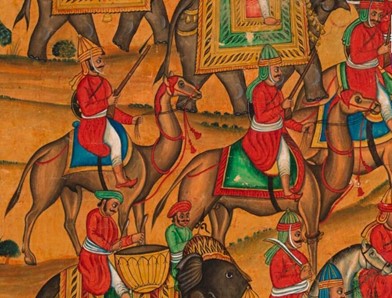
Source:
Igla-S
- Context: The Army, has recently inducted a small number of Igla-S systems bought from Russia under emergency procurement.
- It was procured under Very Short-Range Air Defence System (VSHORAD) deal signed between India and Russia in 2020.
- The Igla-S is a man-portable air defense missile system (MANPADS) designed for countering low-flying aircrafts as well as small aerial targets like cruise missiles.
- It is capable of engaging all types of visually observable aircraft and helicopters as well as identifying air targets such as cruise missiles and UAVs, both head-on and receding, at any time of day, against background clutter and decoy flares (jamming).
- It has a range of 500 to 6000 m with an altitude of 10 to 3500 m. Its target speed head-on and in pursuit is up to 400 m/s.
- Igla-S is an advanced version of the Igla MANPADS with increased combat efficiency.
- Igla-S missiles assure 24*7 close air protection of military installation & civilian assets from attacks by tactical aircraft (fighters, assault aircraft, fighter-bombers).
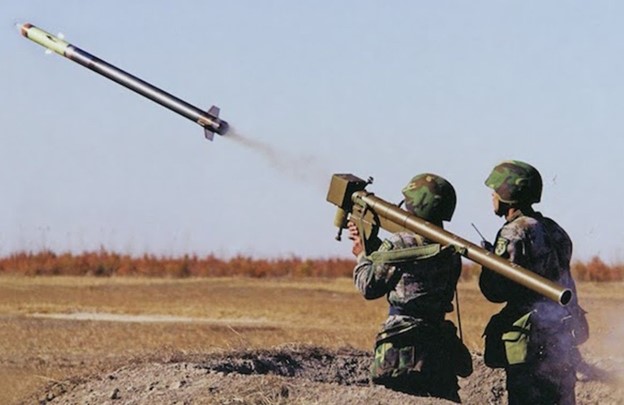
Source:
Image source:
Kheta embroidery
- Context: The first-ever exhibition of Kheta craft is currently on display at Delhi’s National Crafts Museum.
- Kheta embroidery is a kind of quilting, the art of stitching layers of fabrics.
- It is nearly five-centuries-old undocumented craft /kind of geometric embroidery, which almost looks like a weave.
- It is a textile art form that is sensed through the hands and feet.
- Unlike all other embroideries in India that show influence of desert living, Kheta embroidery has influence of rivers.
- The ripples of the river, the movement of the earthworms and textures of the pan patta (betel leaf) are the motifs that find space in the Kheta embroidery.
- It is peculiar to women of Shershabadi community of Kishanganj district of Bihar.
- Women literally walk over the layers while putting the stitches. It doesn’t have any placement of motifs (no central medallion, no corner motifs, no borders) but only a thread running from one end of the layered saris to the other end.
- While in most quilting techniques in India where a single quilt is worked upon by many people, Kheta is done by one person, like a signature quilt.
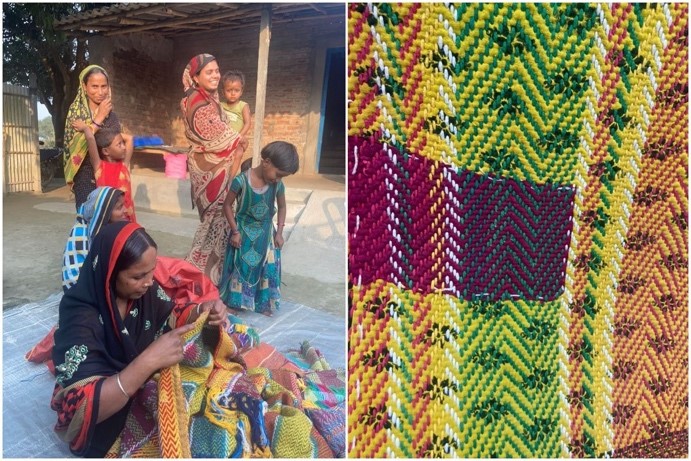
Source:
- When vertical thread movements make for diagonal patterns
- Sewing tales of Bihar’s lesser known Kheta embroidery
Image source:
Look Out Notice
- Context: A journalist in Mumbai was recently stopped from moving out of the country based on a look out circular (LOC) issued by the Enforcement Directorate.
- An LOC is issued to make sure that an individual who is absconding or wanted by law enforcement agencies is not able to leave the country.
- It is mostly used at immigration checkpoints at international airports and seaports by the immigration branch.
- In certain cases, the police can approach a court asking for the restriction of a person’s movement outside the country, when that person is a suspect and there is an apprehension that they may not join the investigation at a later stage.
- The subject of an LOC can challenge the circular and get relief from a court.
- An LOC can be initiated by a large number of authorised officers, including officers not below the rank of deputy secretary, joint secretary in the state government, a district magistrate or superintendent of police, designated officers of various law enforcing and security agencies, and the Ministry of Corporate Affairs.
- The heads of public sector banks can also request the authorities to issue an LOC against wilful defaulters.
- An LOC need not necessarily lead to arrest. They can seek to merely stop a person against whom the circular has been issued from travelling outside the country, to prevent a person from entering the country, or inform the concerned investigation agencies.

Source:
Image source:
Light Combat Helicopters (LCH)
- Context: The Cabinet Committee on Security (CCS) has recently approved the procurement of 15 indigenously developed Light Combat Helicopters (LCH).
- LCH is an attack helicopter designed and built by Hindustan Aeronautical Limited (HAL).
- It derived from the existing Dhruv helicopter and can be deployed in various roles, including tracking slow-moving aerial targets, insurgency, destroying enemy defences, search and rescue, anti-tank and scouting.
- The LCH was developed to meet the requirements of the Indian Air Force and the Indian Army and its maiden flight took place in Bangalore in March 2010.
- The attack helicopter has a pilot and co-pilot sitting in tandem position (one behind the other) and has several stealth features and armour protection, night attack capability and crash worthy landing gear to give it better survivability.
- It is powered by two Shakti engines and has a maximum take-off weight of 5,800 kg.
- With a maximum speed of 268 km per hour it has a range of 550 km and an operational ceiling of 6.5 kms.
- Armed with air-to-air and air-to-ground missiles, LCH also has a 20 mm gun and 70 mm rockets.
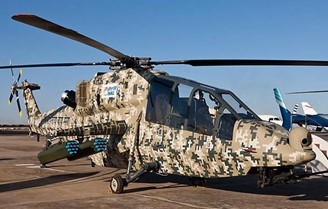
Source:
Image source:
Making all workplaces safer for women: IE
Essence: During the pandemic induced lockdown, female labour force participation rate touched an all-time low of 9.4 %. It must be understood that absence of non-discriminatory and safe working space is a major factor which amplifies the worries for female workplace. This is more acute for women in informal sector. Since 98% of rural and 82% of urban female employment is in informal employment, this should be a major area of concern.
Inefficient implementation of laws like Sexual Harassment of Women at Workplace (Prevention, Prohibition and Redressal) Act 2013 and Criminal Amendment Act 2013 adds to the woes. Sensitizing all stakeholders like informal sector workers, employers, and labour contractors on gender-based violence and informing them about legal provisions will go a long way in addressing the issue. Government and local women’s rights organizations have a proactive role to play.
Why should you read this article?
- To understand factors responsible for low female labour force participation rate in India.
- To understand concerns of women employed in informal sector.
- To understand steps which should be taken to address the problem.
Source:
Renewable energy has a tariff problem. Here’s how to fix it: IE
Essence: Power generation tariffs in India is based on a two-part formula. The first part is a fixed component and is not linked to the amount of power generated. The second part varies with the quantum of generation, based on the cost of fuel. This formula applies to thermal and hydro generation but not to renewable generation which is governed by a single-part tariff which is variable cost.
The variable cost on solar energy varies from a minimum of Rs. 2.5 to sometimes even higher than Rs. 4.5 per unit. This higher cost is leading state governments flouting the principle of “must run” and opting for coal-based power with lower variable costs. The solution to this problem is to apply a two-part tariff formula to renewable energy to reduce the variable cost so that there is no violation of the “must-run” principle.
Why should you read this article?
- To know about the two-part formula used to determine the power generation tariffs in India
- To know about the Renewable energy tariff problem.
- To understand the author`s recommendation on how to fix the problem.
Source:
Yes, a Ukraine peace plan is possible: TH
Essence: The editorial speaks about the weaknesses of the Russia Ukraine conflict and how a stop to it could be the most optimal alternative. Firstly, the west and NATO, instead of accelerating ways to pause the war, are fueling the fire by supplying weapons and aid. This has definitely united the NATO forces at one end, but restraint doesn’t seem to be the aim. What is need is to extend the intention of the warring nations into a peace plan through shuttle diplomacy and interlocuters.
Economic sanctions could be a better option than an all-out war but they do harm the globalized world as well. Food crisis, inflation, availability of fuel, etc. is compromised. It also doesn’t ensure stoppage of the war.
It is possible that Russia starts to ally with China in the long run. In this case, India could need to evolve its stand towards diplomacy. In any proximate future, the possibility of using miniaturized nuclear bombs with precision delivery should be avoided.
Why should you read this article?
- To understand the futility of war between Ukraine and Russia.
- To know the impacts on war on globalized world.
Source:
Accidental Environmentalists
Background
Dr Medha Tadpatrikar and Shirish Phadtare are residents of Pune who accidentally became environmentalist after having encountered a dead deer, which had died due to consumption of plastic.

How the journey began?
- Tadpatrikar and Mr. Phadtare found out that a deer had died in a wildlife sanctuary due plastic consumption.
- They started to look for ideas through which plastic waste can be channelised or repurposed to something useful and plastic pollution could be stopped.
- They started experimenting the processes of plastic conversion in their kitchen itself. They failed initially and later took help from experts.
- The Experts came up with the Thermolytic Deep Polymerization Process, wherein shredded plastic is converted into fuel and the by-products can be utilised as well.
- The technology converts 25 lakh tonnes of plastic waste into poly fuel.
- The poly fuel obtained is much cheaper than the alternatives found in the market and can be used in cooking stoves, generators, and running tractors, etc.
Quote: The greatest threat to our planet is the belief that someone else will save it.” -Robert Swan
Source:
Share the article
Get Latest Updates on Offers, Event dates, and free Mentorship sessions.

Get in touch with our Expert Academic Counsellors 👋
FAQs
UPSC Daily Current Affairs focuses on learning current events on a daily basis. An aspirant needs to study regular and updated information about current events, news, and relevant topics that are important for UPSC aspirants. It covers national and international affairs, government policies, socio-economic issues, science and technology advancements, and more.
UPSC Daily Current Affairs provides aspirants with a concise and comprehensive overview of the latest happenings and developments across various fields. It helps aspirants stay updated with current affairs and provides them with valuable insights and analysis, which are essential for answering questions in the UPSC examinations. It enhances their knowledge, analytical skills, and ability to connect current affairs with the UPSC syllabus.
UPSC Daily Current Affairs covers a wide range of topics, including politics, economics, science and technology, environment, social issues, governance, international relations, and more. It offers news summaries, in-depth analyses, editorials, opinion pieces, and relevant study materials. It also provides practice questions and quizzes to help aspirants test their understanding of current affairs.
Edukemy's UPSC Daily Current Affairs can be accessed through:
- UPSC Daily Current Affairs can be accessed through Current Affairs tab at the top of the Main Page of Edukemy.
- Edukemy Mobile app: The Daily Current Affairs can also be access through Edukemy Mobile App.
- Social media: Follow Edukemy’s official social media accounts or pages that provide UPSC Daily Current Affairs updates, including Facebook, Twitter, or Telegram channels.

